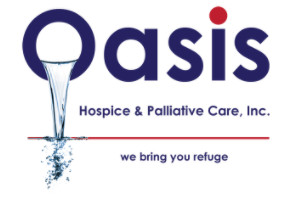Morphine is the mainstay of pain relief for everything from childbirth to advanced cancer, whether the patient is expected to recover completely or is receiving hospice care.
However, when patients and caregivers hear the word “morphine,” they may fear that their doctor has given up and that they or someone they care about will be heavily sedated and left to die. Furthermore, physicians who do not routinely prescribe advanced pain medications in the course of their practice may be wary of prescribing morphine.
Your doctor can consult with a palliative care physician about pain management, especially if you are receiving cancer treatment and you will find out the relation between Hospice and Morphine.
Hospice and palliative care physicians, on the other hand, have the opiates expertise and experience to control their patients’ pain quickly and with as little medication as possible. They then “titrate,” keeping track of each patient’s dosage and symptoms in order to achieve the best level of pain control with the fewest side effects for that patient.
Nobody should have to live in pain.
Nobody, at any age, should have to live in pain. Medications can relieve almost all types of pain. When pain is reduced to a tolerable level, the person is able to eat and sleep, remain mentally alert, and maintain a sense of independence, dignity, and self-care. In conclusion, morphine has the potential to improve one’s quality of life.
Morphine, codeine, hydrocodone, oxycodone, hydromorphone, and other opiates can be taken orally or intravenously. Opiates are naturally derived from opium poppies. “Opioids” are synthetic drugs that mimic the effects of natural opiates. When prescribed and used correctly, both types of medications are powerful, safe, and effective pain relievers.
Morphine and Respiratory Difficulties
Small amounts of well-controlled and regularly titrated morphine can help ease respiratory distress in hospice patients by decreasing fluid in the lungs and altering how the brain responds to pain. Morphin, in addition to slowing rapid breathing, relieves the anxiety associated with struggling to catch one’s breath. Once breathing has been stabilized, doctors will adjust doses on a regular basis based on the type of morphine used, as well as each patient’s unique tolerance level and specific respiratory symptoms.
A 2019 study discovered that small amounts of aerosolized morphine can also act as a “bridge” to easier breathing in a select group of hospice and palliative care patients, the majority of whom had lung cancer, severe lung disease, or respiratory failure caused by other diseases. This method of administration is most effective for patients who have few options for treating respiratory distress or for whom conventional breathing treatments are no longer effective.
Small oral doses of morphine titrated toward relieving respiratory distress are very effective and well-tolerated in most patients.
What You Should Know
There are some legitimate concerns about morphine use that can be addressed quickly and directly:
- Sleepiness and lethargy: Morphine can cause sedation at first, but this effect wears off after a few days. Opiates allow the patient to finally get some much-needed sleep by relieving pain and making breathing easier. When a patient feels more at ease and rested, his or her interest in normal life activities often increases.
- Nausea: Nausea may occur at first, but it usually subsides after a few days of taking morphine. In the meantime, a small amount of additional medication can be used to treat nausea.
- Constipation: With morphine and other opiates/opioids, constipation should be expected and aggressively treated to ensure patient comfort.
- Less effective over time: Tolerance is possible, but it is rarely a problem when morphine is used to treat pain. It is more likely that the disease has progressed over time, resulting in increased pain. If and when pain worsens, the hospice physician can increase the dosage. Generally, doctors start with low doses of morphine; if the pain worsens, the dose can be increased.
- Addiction: Addiction is uncommon (less than 1% of patients taking morphine for pain). However, it is true that morphine should not be abruptly discontinued after two weeks or more of use. The body must be weaned off opiates in order for it to adjust, which is normal human physiology and not addiction.
If you or someone you care about suffers from acute or chronic pain and over-the-counter medications such as acetaminophen or ibuprofen are ineffective, consult your doctor about prescribing an opiate.
When there is an acute symptom to manage, one of the wonderful things hospice can do is provide 24-hour care in the home. A nurse will be present to monitor a patient who is started on morphine for an acute symptom such as pain or respiratory distress.
Pain Management and Hospice
End-of-life care can be difficult and requires the full range of a family physician’s abilities. Significant pain is common, but it is frequently undertreated, despite the availability of medications and technology. Beginning with an appropriate assessment and adhering to recommended analgesic guidelines, family physicians can successfully relieve pain in nearly 90% of dying patients. Physicians must overcome their own apprehension about using narcotics, as well as allay similar apprehensions in patients, families, and communities. Corticosteroids, antidepressants, and anticonvulsants are all medications that can help with pain relief. Anticonvulsants can be especially beneficial in the treatment of neuropathic pain. Pain medication side effects should be anticipated and treated as soon as possible, but good pain control should be maintained. A team approach is best for meeting the physical, psychological, social, and spiritual needs of dying patients. At the end of life, home visits can provide comfort and facilitate the doctor-patient relationship.
Family doctors are uniquely qualified to provide end-of-life care. End-of-life care necessitates intimate knowledge of the dying patient as well as experience with a variety of treatment modalities. Although providing this care can be taxing, it can also be rewarding.
This article discusses pain management in terminally ill patients. Pain in cancer patients is frequently used as an example, but the principles of pain management apply to a wide range of painful conditions that patients face at the end of their lives.
Pain Classifications
A patient on the verge of death may suffer in a variety of ways. Physical pain is common, and it is often the thing that cancer patients fear the most. Other physical causes of pain can include dyspnea or stiffness caused by immobility. Aside from physical pain, dying patients frequently suffer from social isolation, psychological stress, and spiritual crises.
Since there are multiple causes of pain, treating only the physical symptoms can lead to an unsatisfactory experience for both the doctor and the patient. A team approach is best for assessing all aspects of suffering and providing appropriate care.
Pain is an unpleasant sensory and emotional experience that is associated with or described in terms of actual or potential tissue damage.
Pain, on the other hand, is always subjective. Perhaps a better operational definition would be that pain is defined by the patient, regardless of actual or potential tissue damage.
Physical pain can be caused by visceral, somatic, or neuropathic factors. Visceral pain is poorly localized and can be cramping (typically caused by a hollow viscus) or sharp or achy (from an encapsulated organ). Somatic pain is typically localized and described as sharp, achy, throbbing, or pressure-like. Neuropathic pain is frequently radiating and is typically described as burning or stabbing.
According to studies, 30 to 40% of cancer patients report moderate to severe pain at the time of diagnosis, with up to 90% reporting significant pain at some point during the course of their disease. According to one study of cancer patients, 35% of the pain was somatic, 17% was visceral, 9% was neuropathic, and the rest was of mixed origin.

